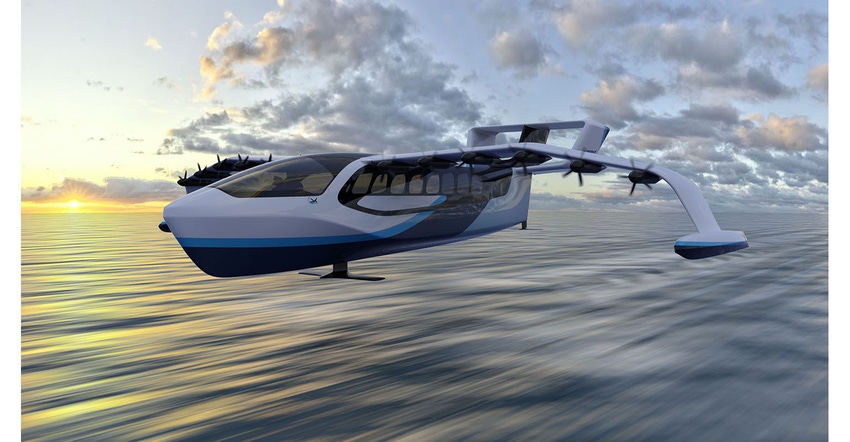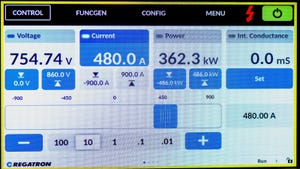Exploring the Advent of Electrification in Aviation with REGENT
From pioneering electric propulsion systems to navigating challenges in energy storage and regulatory compliance, the Director of Engineering at REGENT shares invaluable insights into the electrified future of flights.

As the world unites to combat climate change and embrace sustainability, the aviation industry stands at the forefront of a remarkable transformation powered by electrification. The rise of electrification is challenging traditional paradigms and reshaping the future of air travel. Battery Technology spoke to Dan Cottrell, Director of Engineering at REGENT Company, to learn how engineering pioneers collaborate to shape the future of aviation as they navigate regulatory landscapes, embrace cross-industry considerations, and envision a sky filled with safe, economical electric aircraft. Join us for a comprehensive glimpse into the electrifying journey that is transforming aviation as we know it.
As the Director of Engineering at REGENT, what specific projects or initiatives has your team been involved in to advance electrification in aviation? Can you share any success stories or milestones achieved in this domain?
Cottrell: Several of our team and I come from both automotive and aerospace companies (large and small OEMs) that have previously made progress in the electrification of vehicles, and we are leveraging that experience as well as robust supplier partnerships to advance designs across all avenues of electrification in our vehicle and as such the industry.
At REGENT, our early success with our fully electric subscale vehicle has helped provide a solid proof of concept for an electrified mode of transportation that merges aerospace and maritime industries. This subscale vehicle successfully leveraged distributed propulsion, primarily enabled by electrification, and a fully electric fly-by-wire system that controls all functions and actuation on our wing in-ground effect vehicle. By the very nature of the operating environment, we are helping to lead the way in addressing the challenges of high-voltage DC propulsion systems in a maritime environment where a system similar to ours is new.
As we progress with our full-scale design, we are helping to push the technology alongside proven industry partners to implement an 800 VDC propulsion system comprised of a lithium polymer battery solution capable of up to 450 kWh of stored energy and highly efficient and integrated air-cooled combined motor/inverter-controller drive systems.
Electrification in aviation poses unique challenges, particularly regarding battery technology and energy density. What are some of the current obstacles that engineers and researchers are actively working to overcome, and what potential solutions are being explored?
Cottrell: As a fixed-wing vehicle operating in ground effect consistently over the water, our design doesn’t require some of the very lofty targets for specific energy to close our mission and provide value to our customers. One of the complex challenges of electric aircraft is that they must carry extra stored energy to meet reserve fuel requirements.
A unique aspect of seaglider operations is that we can land at any time throughout our mission. This helps minimize the hurdle for our vehicle to perform its mission using current battery technology. That said, we are always keeping an eye on cell development and packaging advances, particularly with an eye on safety. Generally speaking, thermal runaway containment while minimizing its mass impacts is probably one of the biggest hurdles we continually work with our vendors to improve.
Adopting electrification in aviation is not just about creating electric aircraft but also establishing the necessary infrastructure to support them. How do you see the industry addressing the infrastructure challenges, such as charging stations for widespread electric aircraft usage?
Cottrell: Infrastructure challenges will require the industry as a whole to come together to agree on standards and best practices to allow a more seamless and economical path to widespread adoption. Similar to consolidation recently seen in automotive charging but with less established, the aviation industry needs to move towards collective decisions now and avoid multiple proprietary solutions that will impede adoption by making customers choose singular solutions minimizing utility across various platforms.
It would be in everyone's best interest to consider the cross-industry impacts as decisions are made to produce solutions that optimize efficiency across auto, aviation, and marine applications. REGENT is in a position where we must consider cross-industry requirements since we operate in a maritime environment (dock infrastructure) but leverage aviation industry components.
The aviation industry is highly regulated for safety and reliability reasons. How are regulatory bodies responding to the advent of electrification in aviation, and what are the main considerations they are taking into account as they adapt existing standards or create new ones? How does this impact the development and certification process for electric aircraft?
Cottrell: REGENT seagliders are unique in this respect as we adhere to maritime authorities rather than the FAA. We have found the maritime classification societies are very responsive to working with us to define the most relevant standards and solutions. In many cases, both in aerospace and maritime, we leverage existing standards as a baseline and build on them in an attempt to modify what regulatory bodies have come to accept rather than start from scratch.
There is a lot of education that has to happen to bring regulators up to speed on the differences between previous electrical systems and those used in fully electric vehicles, particularly as the tech continues to advance, but we have found that the regulatory bodies we are working with are very receptive.
How do you envision the future of electrification in Aviation?
Cottrell: I think the future of electrification will be pushed forward by many smaller companies rather than the classic OEMs that we are used to. It will continue to push forward with the 2 to 12 passenger vehicles and regional transportation until energy storage solutions can really provide safe, reliable, options for high enough specific energies to support large vehicles. Having seen the progress in the automotive industry, I think the aviation industry is in a much better place to move electrification forward, leveraging lessons learned, in the core vehicle technology, architecture, and infrastructure.
Although I think timelines will be longer than many advertise, progress will still move faster than may be expected based on historical aerospace trends. I'm hopeful that with all the new players across multiple industries, who are motivated, well-funded, and pushing hard on all aspects of new vehicle development, we’ll see safe, economical solutions that open up travel for many across the world, sooner than later.
The REGENT Company will participate in the panel titled “Advent of Electrification in Aviation, Possibilities, Challenges, and New Developments” at The Battery Show North America in Novi, MI, Sept. 12–14, 2023.
About the Author(s)
You May Also Like





